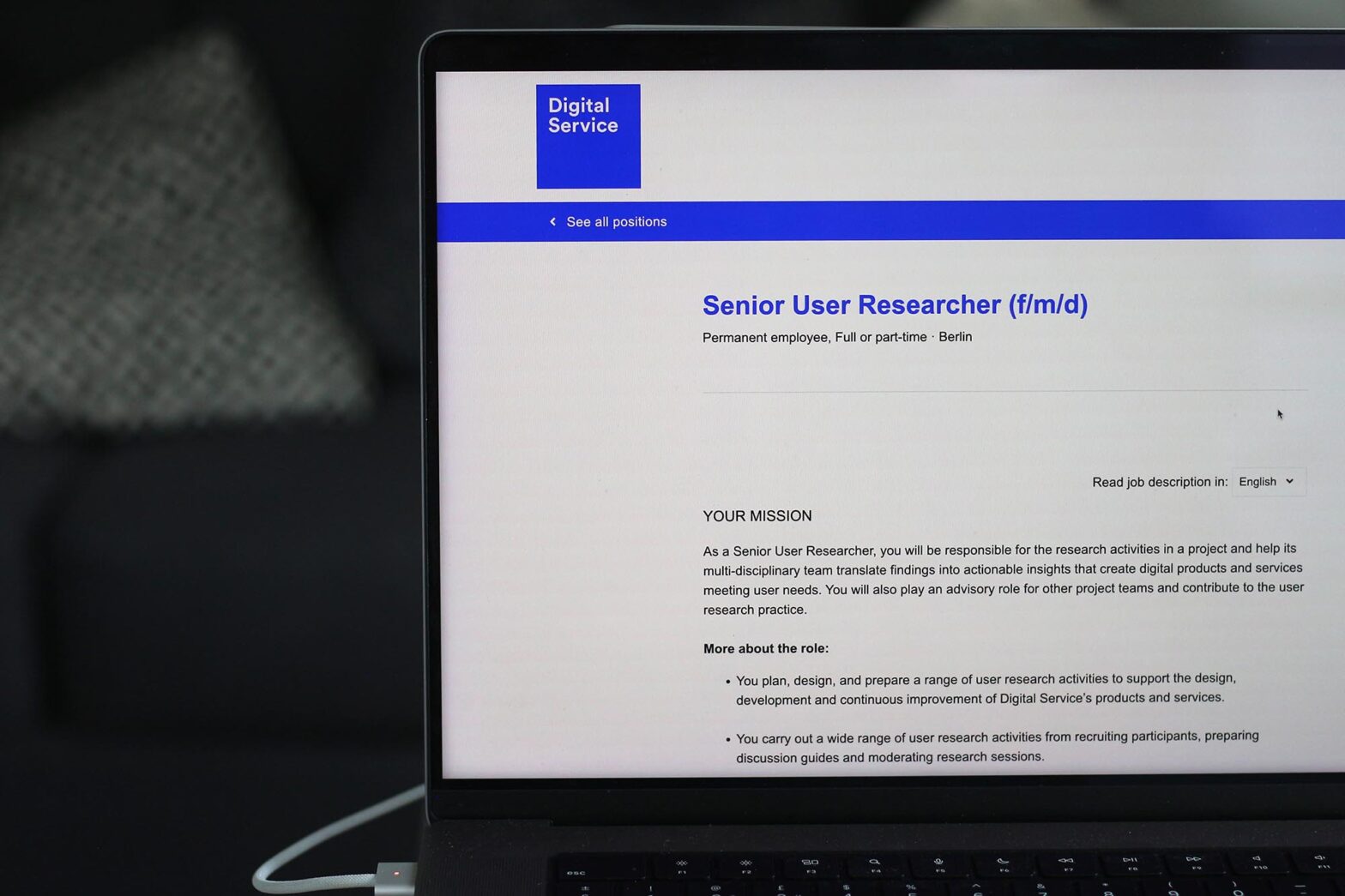It’s out. We opened our first senior user research role on Friday and published the job description in English and German. It’s the first new user-centred design role created since I joined, and it might not be the last.
Creating a user research role
Establishing a dedicated user research role was relatively straightforward. The case was easy to make as user research as an activity in the organisation had been already well established. Mostly, designers and product managers have been preparing, conducting and analysing user research studies. For 1 discovery, an external user researcher was hired and demonstrated more profound expertise and a broader range of skills and tools at their disposal. So when arguing for it, there was no resistance from no one. Quite the opposite was the case. People nodded in agreement.
I worked closely with talent acquisition manager Corinna to draft the job description, define what person we are looking for and what the application process should look like. Quickly, it became clear that we needed to have designers and product managers involved in the interviewing process. Specific questions are best asked by a product manager – as the person coming into the role will have to work with them closely.
Having worked in organisations with user research as a separate function for over 10 years, I have never been involved in recruiting a user researcher. I have interviewed a few – but only when they applied for design roles. So I was not sure how to ask user researchers for previous work. Of course, I took it to Twitter again. The feedback received in 24 hours was pretty explicit, and we called it ‘work examples’ now.
I am curious to see what applicants submit and how they structure their work examples. As suggested in our design portfolio blog post from 2020, I referenced the STAR method in the job description directly this time. I can only hope that people are going to use it.
My previous Head of Service Design role at the UK Cabinet Office reopened almost simultaneously. I am happy about it. In the face of workforce reduction in the Civil Service, it would not have been unlikely for the role to disappear. The description is different from mine when I applied almost 6 years ago.
I tweeted about it, offering any potential applicant and curious person my time for a chat. I also wanted to give further context.
Building business cases for communities of practice
Some things don’t go away. Some questions aren’t ever appropriately answered. One question that has kept coming up for over half a decade now is how to build sustainable communities of practice and make compelling business cases around them.
People did share some valuable resources I will dig through as this is relevant in several contexts at the moment.
One of the quirky and frustrating things is that some organisations only fund things that are genuinely new and novel, but not things that have been well established. That is a problem if you already have a developed community of practice. Also, the funding organisation might want to shift the purpose for additional and direct value extraction. But that is not how communities work.
One of the contexts in which this is relevant is our forthcoming workshop in Edinburgh in September. It has now been announced, and the schedule has been published. I’m still pleased with our ambivalent title ‘design culture that delivers’. Is it about ‘design culture’ or ‘designing culture’? Of course, it’s about both.
Clara and Kara had an evening working session to develop the outline and general structure this week. Currently, it’s announced as a 60-minute session, but we’ll need to stretch it to 85 mins for more substance.
Designing content for whatever format always helps me accelerate my thinking. So, I’m happy we will be running this workshop. Also, it will be an excellent opportunity to catch up with more government folks from the UK and internationally.
What’s next
My key priority is to let people know about the user research role. The user research blog post needs a bit of editing, but it will be instrumental in getting people’s attention on social media.

